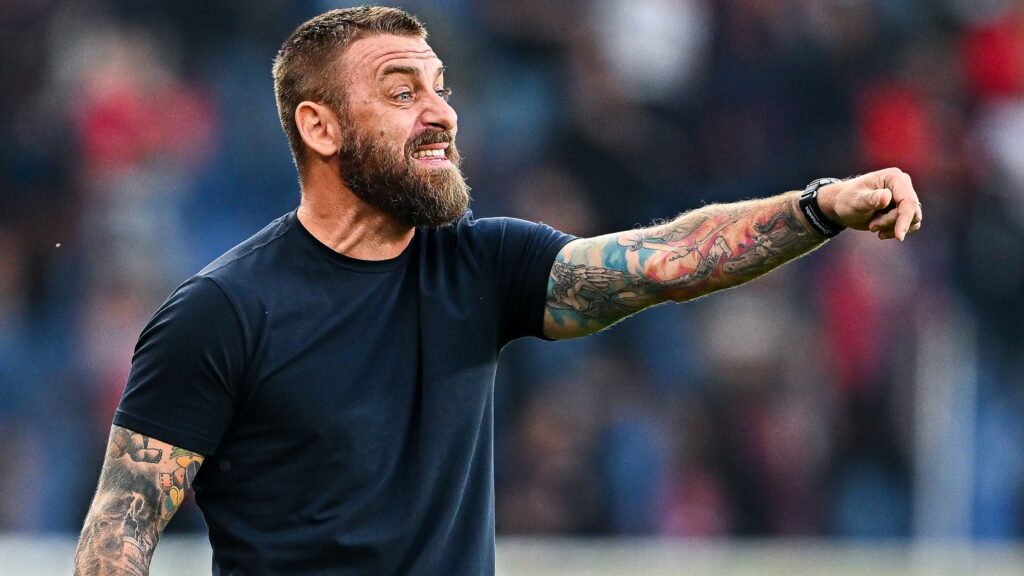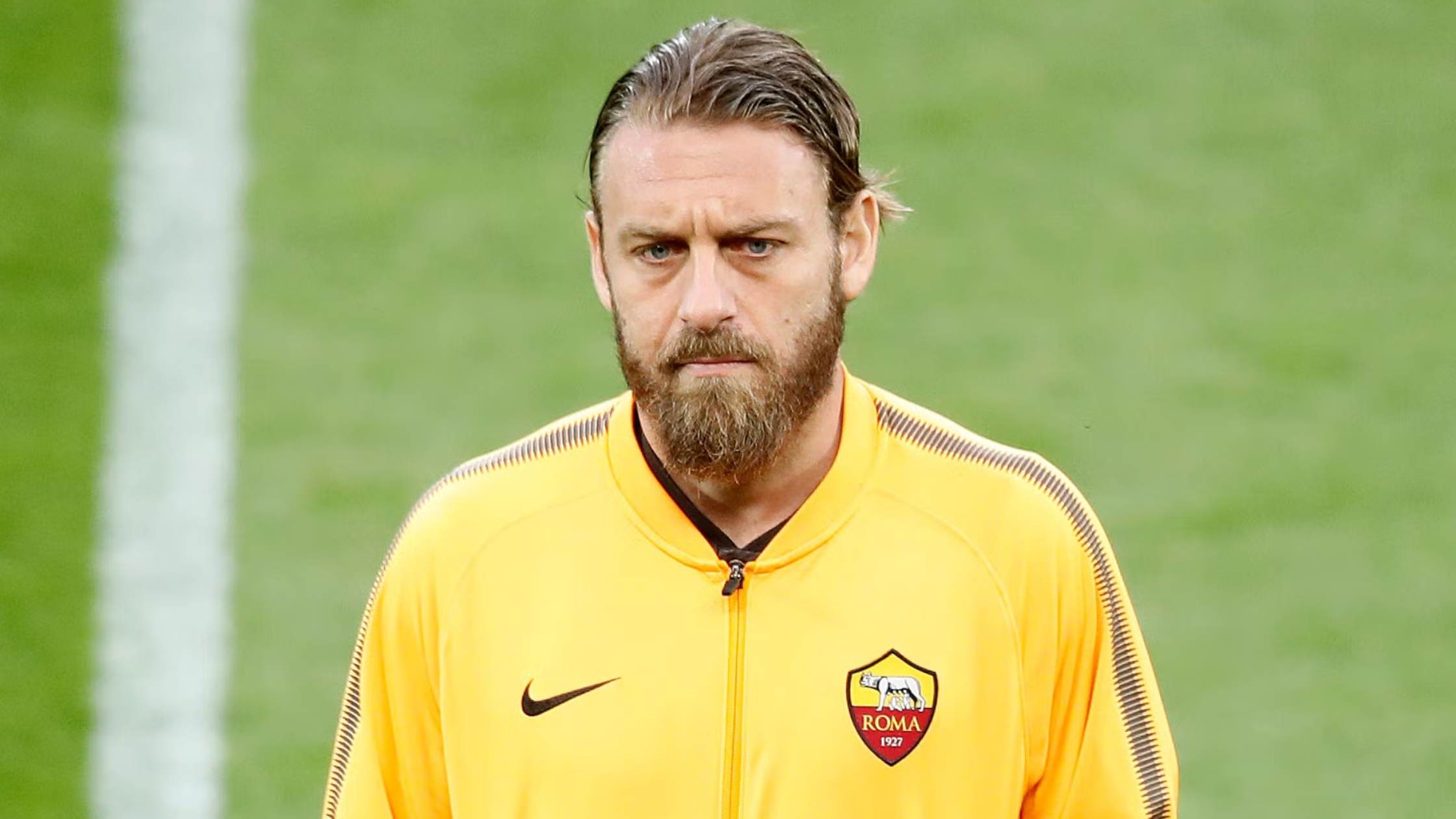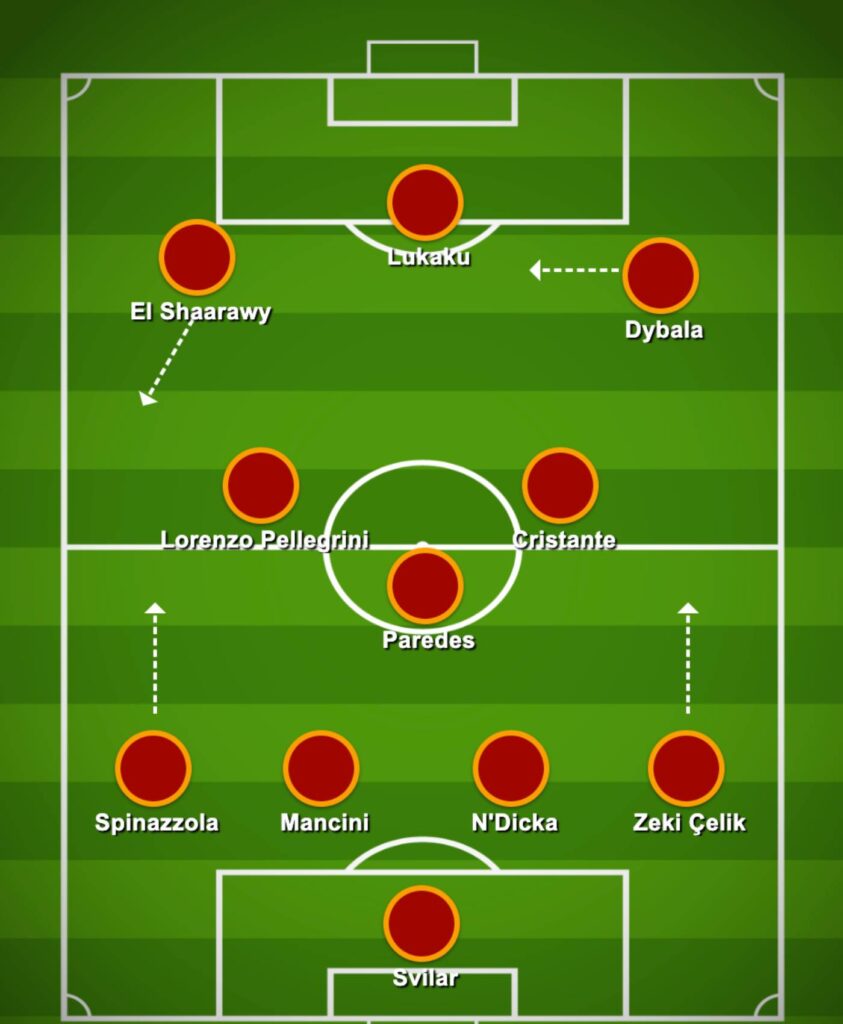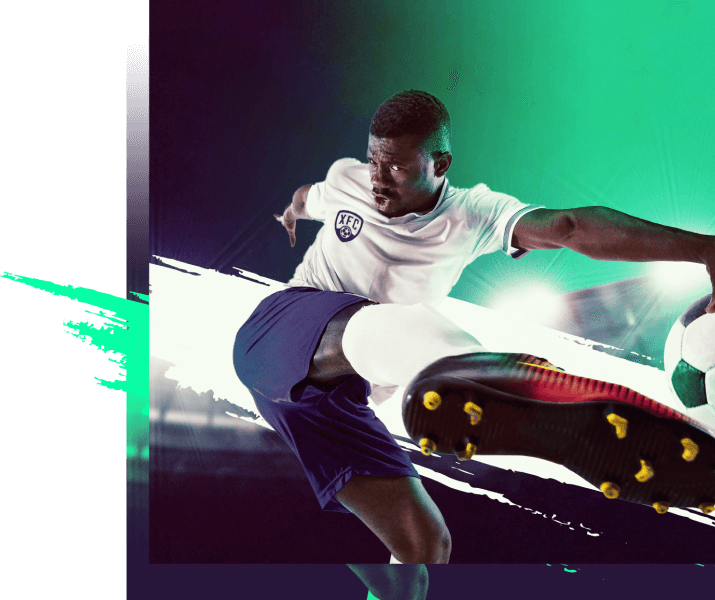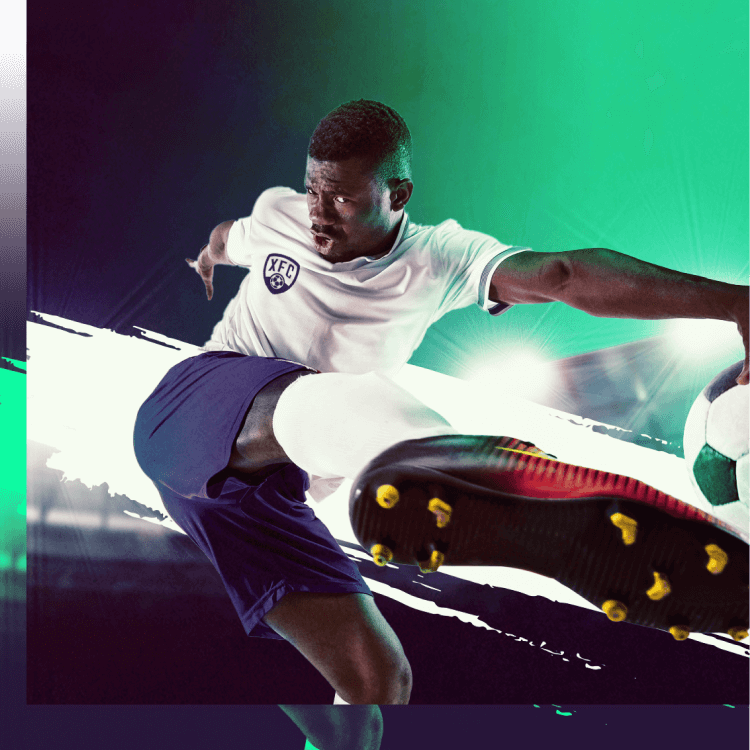Danielle De Rossi got his dream job this – managing his beloved AS Roma. It didn’t matter that he was an interim manager or that Jose Mourinho’s shadow still loomed large. And while few expected De Rossi to do much besides provide the vibes, he has truly turned the Rossoneri’s season around.
That’s a reason for celebration and a good time to look at the tactics with which De Rossi has achieved this.
Career Prior to Managing AS Roma
Danielle De Rossi is one of AS Roma’s greatest legends. In fact, other than Francesco Totti, no other player in modern times has had a greater impact on the club. This has made his success this season, and the fact that De Rossi has signed on a permanent basis is all the sweeter for Roma’s devoted fans.
Football Philosophy
In simple terms, Danielle De Rossi has made AS Roma, once more, chase scoring goals, whereas Jose Mourinho’s approach was to avoid conceding them.
Mourinho’s strategy bore fruit in knockout competitions. That’s how Roma reached two straight European tournament finals, after all. But De Rossi’s working in a different way. AS Roma has just qualified for the semi-finals of the Europa League, an important achievement.
De Rossi has spoken respectfully of his predecessor, Jose Mourinho. After all, many fans of AS Roma still hold a special place in their hearts for the Portuguese tactician. However, De Rossi has opted to move further and further away from Mourinho’s conservative approach to playing football.
Formations and adaptability
Danielle de Rossi has slowly moved away from Jose Mourinho’s highly compact five-man defence. AS Roma now uses a 4-3-3 formation in most games. While they still defend rigidly, in a low block, the system also provides the team’s players with creative players. This is good news, as the Rossoneri actually benefit from a strong squad filled with expressive talent.
However, De Rossi hasn’t ditched the 3-5-2 approach entirely. After all, this has been drilled into the players by Mourinho for years. The system has been used against tougher opposition when defending narrowly was a greater priority. Still, while using this system, AS Roma continued to be more attack-minded than in its previous iteration.
One of the biggest changes since the departure of Mourinho has been the way that De Rossi instructs his wing-backs to play. Leonardo Spinazzola and Angelino or Rasmus Kristensen tend to join attacks, influence play in the final third, and cross the ball into the box.
Often playing with three attackers up front has also meant that players who were often left-benched under Mourinho or found it hard to integrate are now back in focus. Paulo Dybala now plays almost as a False 9, moving between the lines and using his exceptional skill on the ball. Dybala has been the breakout star of De Rossi’s Roma.
AS Roma in Defense
The Stadio Olimpico had acquired the reputation of being a fortress when Mourinho was in charge. However, somewhat surprisingly, De Rossi’s defensive principles have only emphasized the team’s defensive strength. Rui Patricio and, more recently, Mike Svilar have kept nine clean sheets since the start of the season.
De Rossi’s Roma can still be compact defensively. But this is no longer their default go-to plan. Gianluca Mancini is the defensive general. In central defence, he is usually paired up with Chris Smalling or Dean Huijsen.
The team defends from the front. Dybala and Lukaku are tireless in their approach. El Shaarawy, the third attacker, will often move into a left-winger position when the team is out of position. In this way, AS Roma often moves in a more compact 4-4-2 formation when chasing the ball.
However, when De Rossi opted for a three-man defence, as was the case in their 3-2 victory over FC Torino, Mancini, Smalling and Evan Ndicka were chosen to play together in the centre. Meanwhile, Angelino and Kristensen were used as defensive wing-backs.
Defensive midfielder Leandro Paredes provides additional defensive support. A master of the dark arts of football, Paredes is a master of not just tackling but also breaking up play without incurring too many yellow cards along the way.
De Rossi’s Roma often prioritizes man-to-man marking. It’s a risky technique. Against more technically capable opposition, this has led to mistakes which, in turn, lead to conceding goals.
AS Roma in Attack
Danielle De Rossi, if anything, has encouraged his players’ natural desire to incorporate more creativity into their game. Meanwhile, Jose Mourinho liked to work with a clear, rigid plan for creating chances in the final third.
Like many of the world’s best football teams, Roma builds from the back. In creating chances, they may utilize the skills of all of their players. And, while this is not a particular strength of either Patricio or Svilar, the goalkeepers are assisted in their efforts by the strong ball control of defenders like Mancini.
The wing-backs are very important to the build-up play. Angelino and Spinazzola advance high up the pitch and offer their teammates passing options. Paredes and Bryan Cristante, the team’s defensive midfielders, are also highly important. Both are good passers with strong ball control. Previously, they’d been used primarily in destructive roles.
Players are expected to cover for teammates. Lorenzo Pellegrini, Stephan El Shaarawy and Dybala are the two who are given more freedom than others.
Pellegrini, in particular, has enjoyed something of a resurgence under the management of De Rossi. His ability to ping incisive passes onto the feet of Romelu Lukaku or Dybala has proven important in many key games.
What is next for Danielle de Rossi and AS Roma?
Danielle De Rossi has rejuvenated AS Roma at a time when this seemed highly unlikely. Part of this is down to his personality and reputation. Jose Mourinho was highly beloved by supporters. The only men they admire more are De Rossi and Francesco Totti.
However, the results speak for themselves. Danielle De Rossi has altered Roma’s tactics. This has made the team return to battling for a Champions League sport. It’s also helped Roma defeat AC Milan to advance to the semi-finals of the Europa League, where they’ll meet Xavi Alonso‘s Bayer Leverkusen. Both of these are significant triumphs.
De Rossi deserved more time. The AS Roma hierarchy was happy to afford him this at a stage when replacing the popular Mourinho could have proven unpopular with the team’s fans.
De Rossi’s style, however, is still something that Roma’s players are learning. Yes, they are enjoying playing with more attacking freedom. However, with more time on their hands, a more defensive structure may also be integrated.
Can De Rossi improve on his already impressive record? In the short term, yes. If Roma take advantage of their momentum, they could be one of Serie A’s most impressive sides next season and even battle for the elusive Scudetto.
